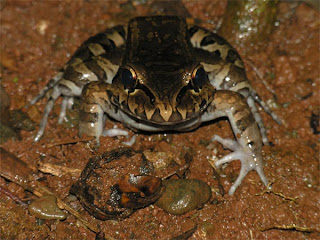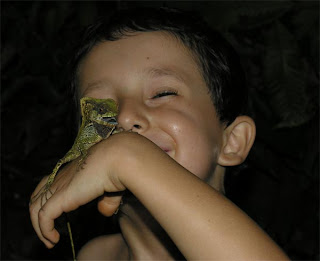
A Central American Tree Boa, known locally as "Boa Manglar" (we suspect probably the same individual as visited and stayed with us last year) has recently moved from the toolshed to the house, and sits in the rafters, when not out basking in the morning sun or hunting bats by night. Apparently, Corralus ruschenbergerii is one of the longest species in the genus. Ours is ca. 2 meters. We found a nifty site about these attractive snakes at: http://www.corallus.com


